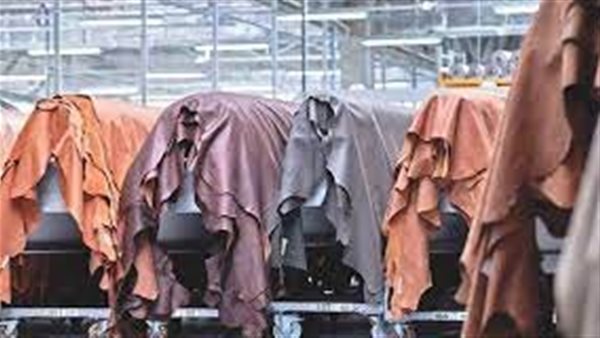The industrial sector in Egypt holds a prominent position in terms of significance to the Egyptian national economy as it leads all other economic sectors in terms of its contribution to (about 20%), as well as its close ties to numerous productive and service sectors, as well as its contribution to the growth of international trade. and strengthen the payment balance.
Numerous industries, including the textile, sugar, oil, and rice milling industries, were among Egypt’s powerful sectors. The leather business prospered as well. About 126 million square feet of tanned leather are produced in Egypt each year, with Old Egypt’s leather tanning complex accounting for about 75% of the nation’s total leather production.
Around 320 small, medium, and large private tanneries, chemical and raw hide storage facilities, repair shops, and factories making glue and gelatin are all located in Old Cairo. The area has roughly 8,000 employees working for it.
According to the most recent report released by the Export Council, which is a 7% drop in the volume of exports in the first half of this year, the state has been interested in the leather industry and the establishment of the new city of Al-Rubiki, despite that it is still experiencing many crises and difficulties that have led to a decrease in the volume of its exports.
Reduced demand for genuine leather globally, combined with the economic difficulties the world economy is experiencing Despite being more readily available, having lower prices, and having advantages in the leather industries in terms of strength, durability, and shelf life, the majority of factories working in the field of leather relied on imported artificial leather as a replacement for natural leather.
The sector is currently dealing with two issues: the failure to relocate the tanneries to El-Robiki and the export of raw leather with no discernible financial gain. on remuneration.
The new city of Al-Rubiki is located in a region far from slaughterhouses and butchers, which made it difficult to transport and dispose of leather due to transportation costs, according to a member of the Shoe Division’s Trade Council, explaining that the reasons for its low prices are the difficulty of transporting it and the low availability of large quantities of the previous year’s stock.
In addition to the fact that the majority withdrew from transport despite giving the state multiple opportunities and a grace period for transport, there aren’t many tanneries operating in the transport sector because 80% of the industry is based on small manufacturers, which means that only 20% of tanneries work and they are large manufacturers.
Aside from the fact that there are 14 technical schools for the Leather Division at the level of the Republic and a technical institute, and that there was no benefit from students in these schools, the industry also faces a number of other issues, the most significant of which is a labour shortage despite the high wages.
In addition to the fact that the rate of increase in raw material prices varies from raw to another, but all factories feel the increase in production, the prices of raw materials for the production of leather shoes, beginning with adhesives, leather, and insoles, moved by a significant percentage as a result of the movement of international prices as a result of the recent wave of inflation.
Additionally, with the recent regulation of arbitrary imports, the proportion of finished goods imported from outside is decreasing. He emphasised the rise in raw material production on a global scale and in all nations.
Egypt’s leather industry. What impact does the dollar price have on this industry?

